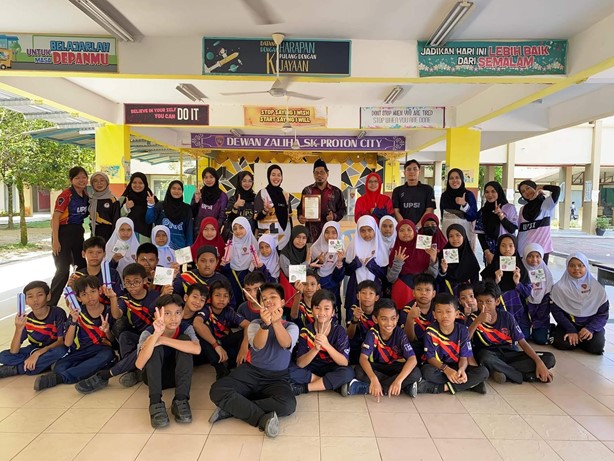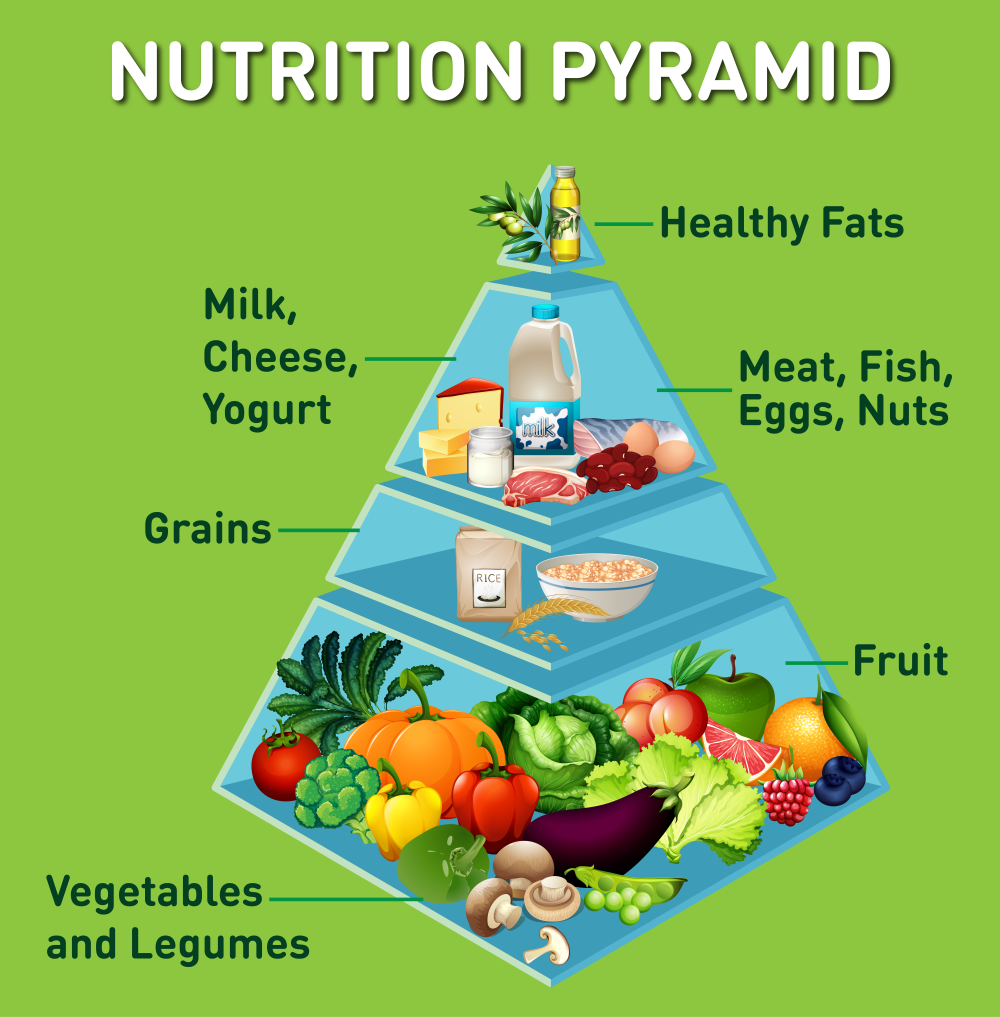With today’s busy lifestyle, healthy eating for kids is fast becoming more difficult. With more processed foods and hectic schedules, many children don’t get the balanced diets they need for good growth and learning.
To address this problem, educational programs like “Smart Eats for Young Minds” are essential. This event, held on 9 May 2024 at Sekolah Kebangsaan Proton City in Tanjong Malim, Perak, offers a comprehensive approach to nutritional education through the “quarter, quarter, half” method and the nutrition pyramid.
The “Quarter, Quarter, Half” Method
The “quarter, quarter, half” method is a simple yet effective strategy for meal composition. It encourages children to divide their plates into three portions: a quarter for proteins, a quarter for carbohydrates, and a half for vegetables. This method helps kids get the right nutrients, which supports their overall health.
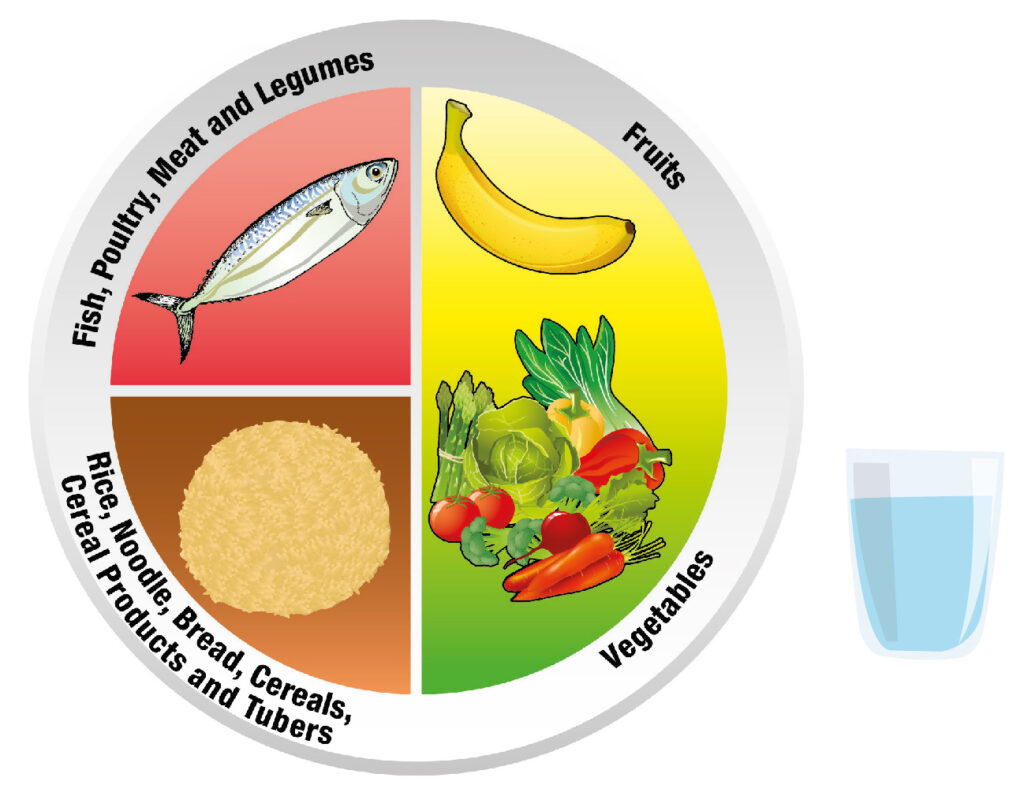
Proteins in foods like meat, fish, eggs, and legumes are crucial for growth and repair of body tissues. Carbohydrates, present in grains, rice, and bread, provide children’s primary energy source. Vegetables are rich in vitamins, minerals, and fibre to support immune function, digestion, and various bodily processes. The “quarter, quarter, half” method ensures children can achieve a balanced diet to support their growth, development, and learning.
The Nutrition Pyramid
The nutrition pyramid complements the “quarter, quarter, half” concept by offering a visual guide to different food groups and their recommended daily servings. At the bottom of the pyramid are fruits and vegetables, which should be the largest portion of a child’s diet because they are very nutritious. The middle layers include grains and proteins, followed by dairy, which provides calcium and vitamin D for strong bones. At the top are fats and sugars, which should be eaten in small amounts.
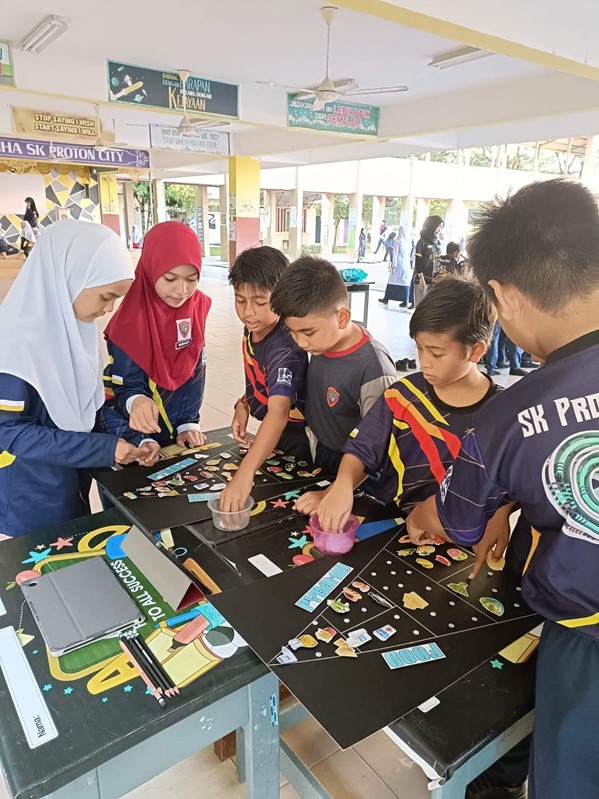
The pyramid helps children understand why eating different kinds of food is important. Eating foods from all groups gives them a wide range of nutrients necessary for optimal health. It also teaches children to limit their intake of foods high in sugar and fat.
STEM-Related Educational Activities
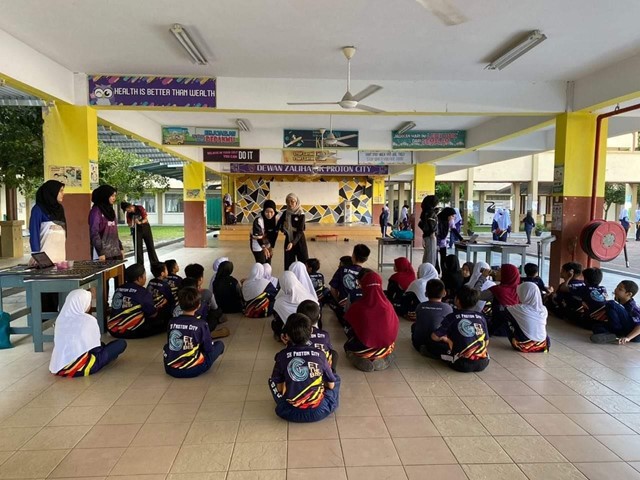
Integrating STEM education into nutritional programs can enhance children’s understanding of the science behind healthy eating. The “Smart Eats for Young Minds” event showed this approach by involving students from Universiti Pendidikan Sultan Idris (UPSI) in educational activities. These students, enrolled in the Food Science and Nutrition course (SBK 3023), played a crucial role in designing and delivering the program.

The college students utilised interactive methods to teach primary school pupils about nutrition. They conducted experiments demonstrating the effects of different nutrients on the body, explained the biochemical processes involved in digestion, and used technology to create engaging presentations. This hands-on approach made learning about nutrition fun and highlighted the importance of STEM education in everyday life.
Engaging Activities and Community Involvement
The event included fun activities to teach and engage children in healthy eating. For instance, students participated in a “build your plate” activity using colourful food models to create balanced meals based on the “quarter, quarter, half” concept. They also participated in interactive games and quizzes about the nutrition pyramid, helping them to remember the lessons enjoyably.
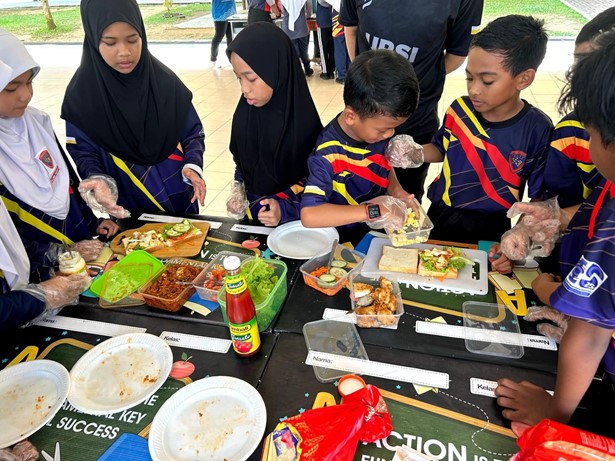
These activities were not just about education but also about building community. The college students from UPSI acted as role models, showing the importance of healthy eating habits and community service. Their participation highlighted the significance of collaborative efforts in addressing public health issues.
The Impact and Future Directions
The success of the “Smart Eats for Young Minds” event highlights the effectiveness of combining nutritional education with STEM-related activities. Teaching children about balanced eating and the science behind it can help them develop healthy eating habits for life. Moreover, the involvement of college students in these initiatives provides them with valuable teaching experience and a better understanding of community health issues.
Expanding these programs to more schools and communities can greatly improve public health. Developing similar programs incorporating STEM education can further enhance children’s understanding and appreciation of healthy eating. As these young minds grow, the knowledge and habits they learn now will lead to a healthier future generation.
In conclusion, the “quarter, quarter, half” concept and the nutrition pyramid are vital in promoting balanced nutrition among children. When paired with engaging STEM-related educational activities, they form a powerful foundation for lifelong wellness. The “Smart Eats for Young Minds” event is a great example of how we can tackle nutritional challenges in our youth with the right approach.

